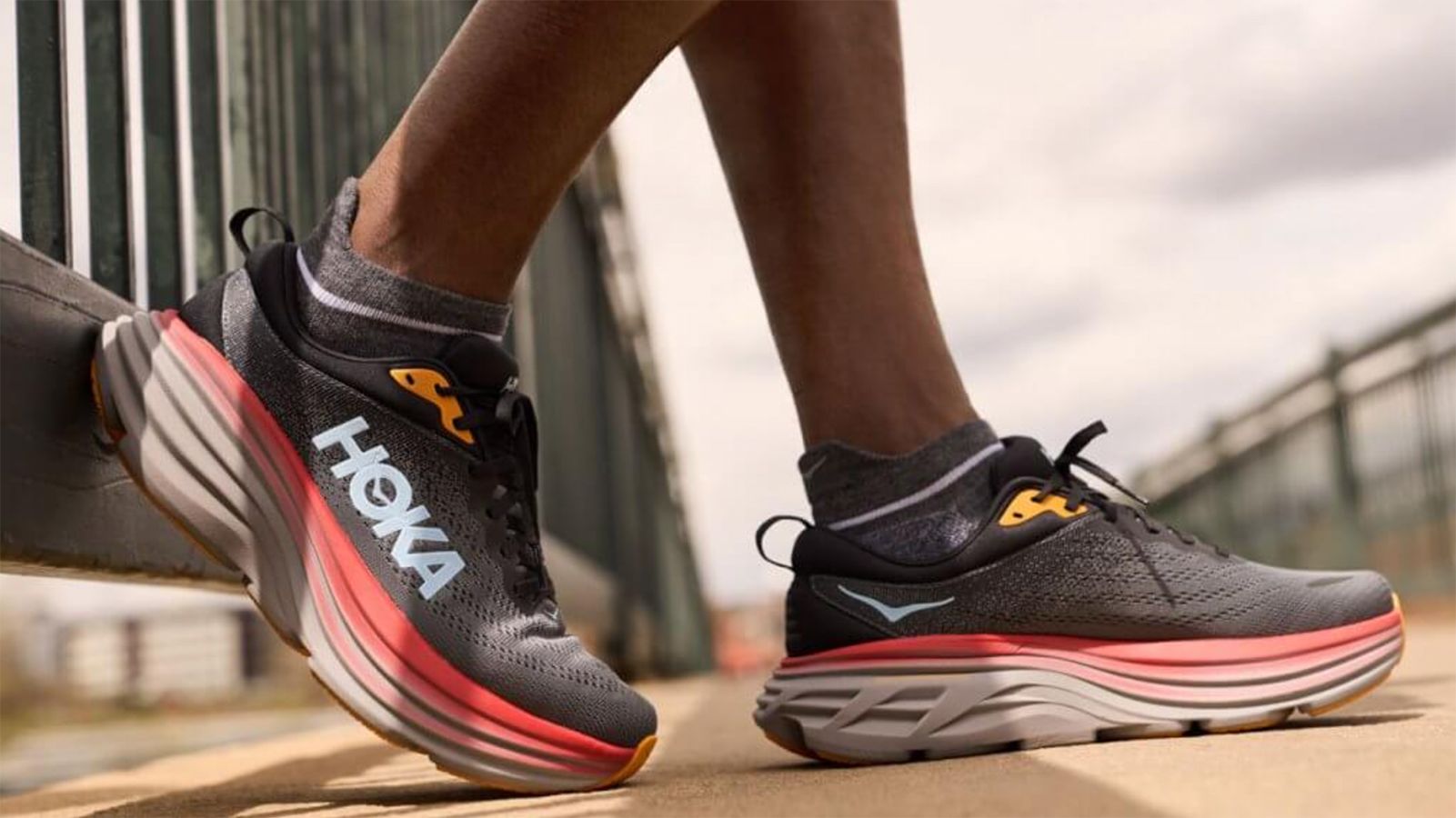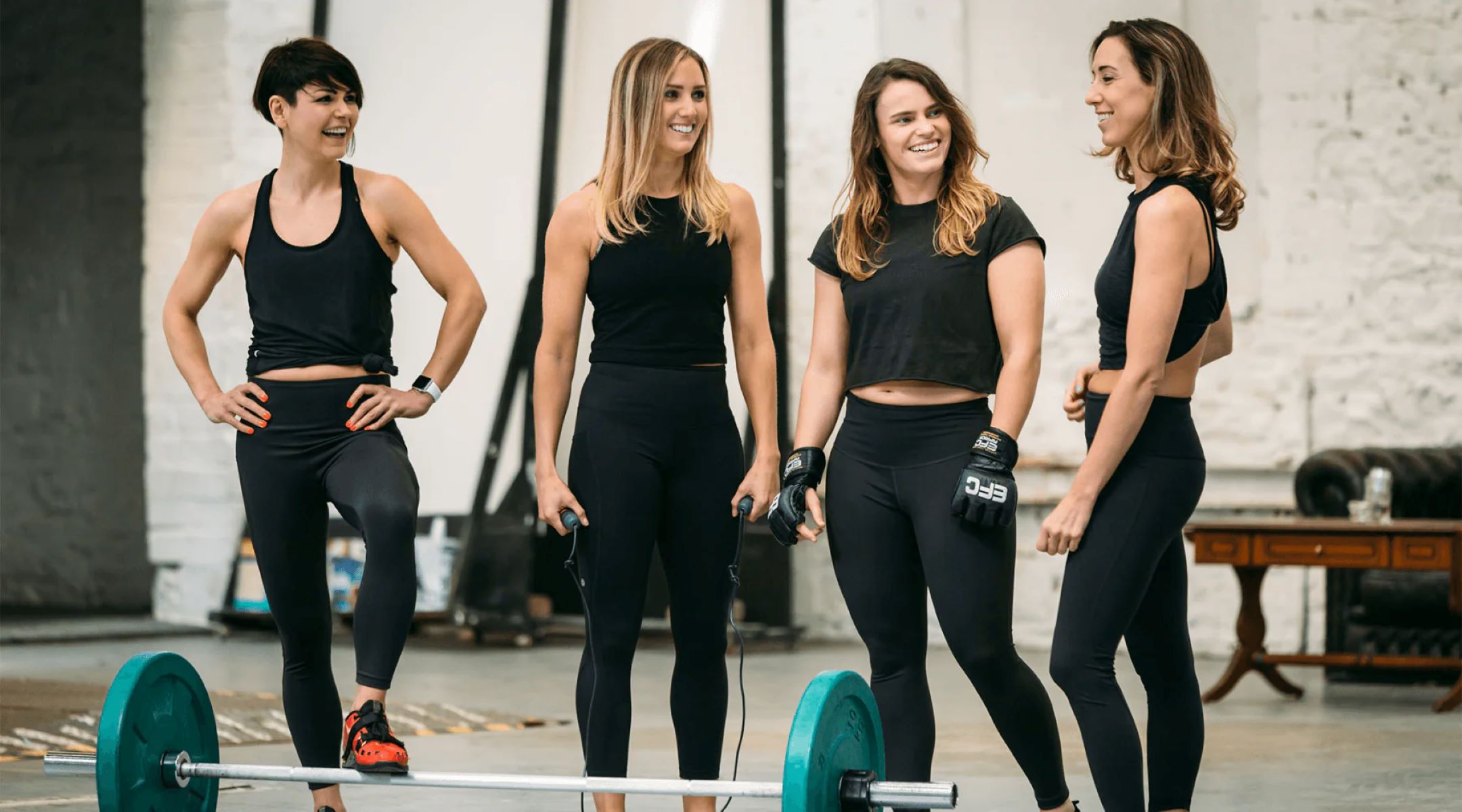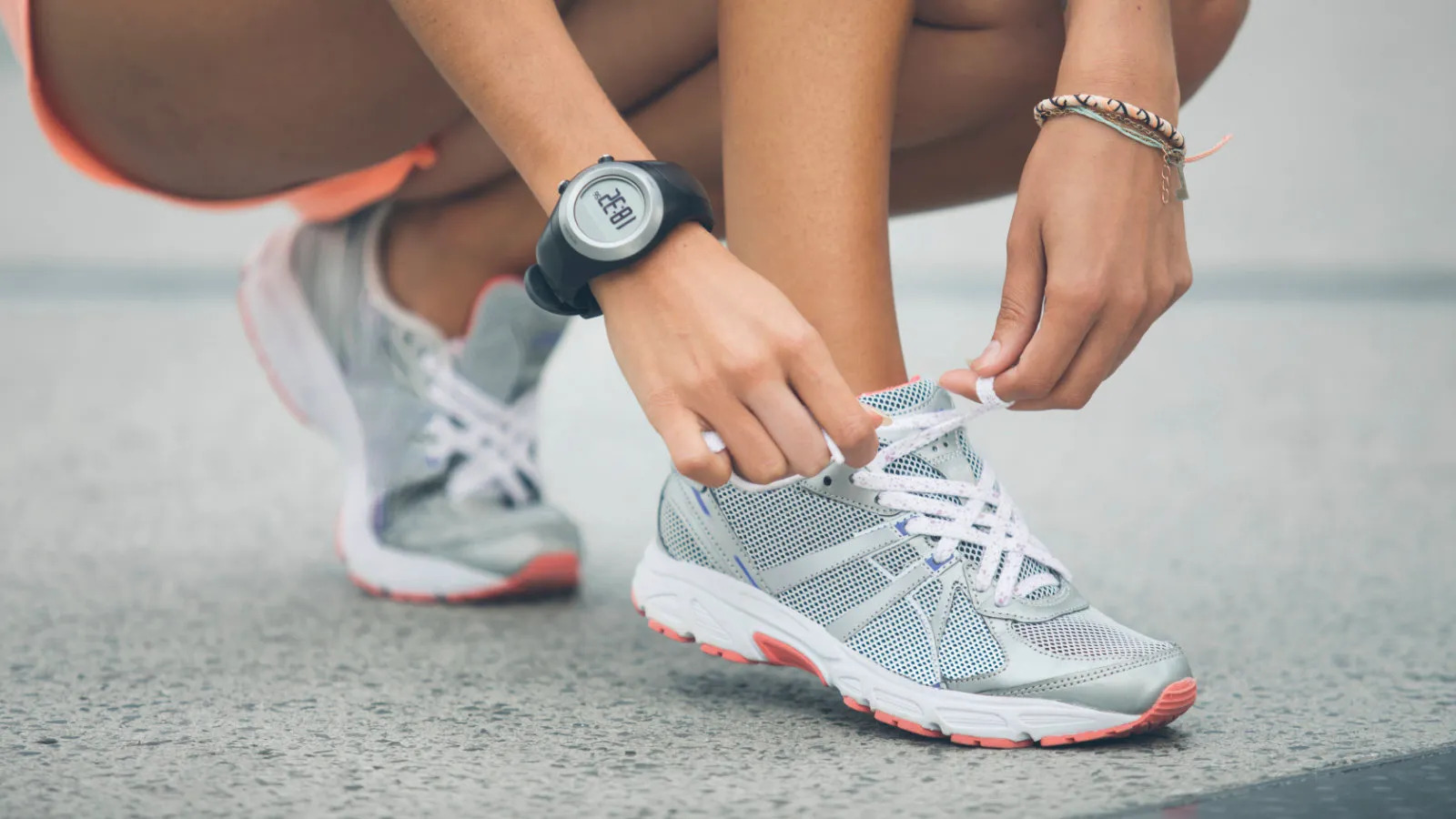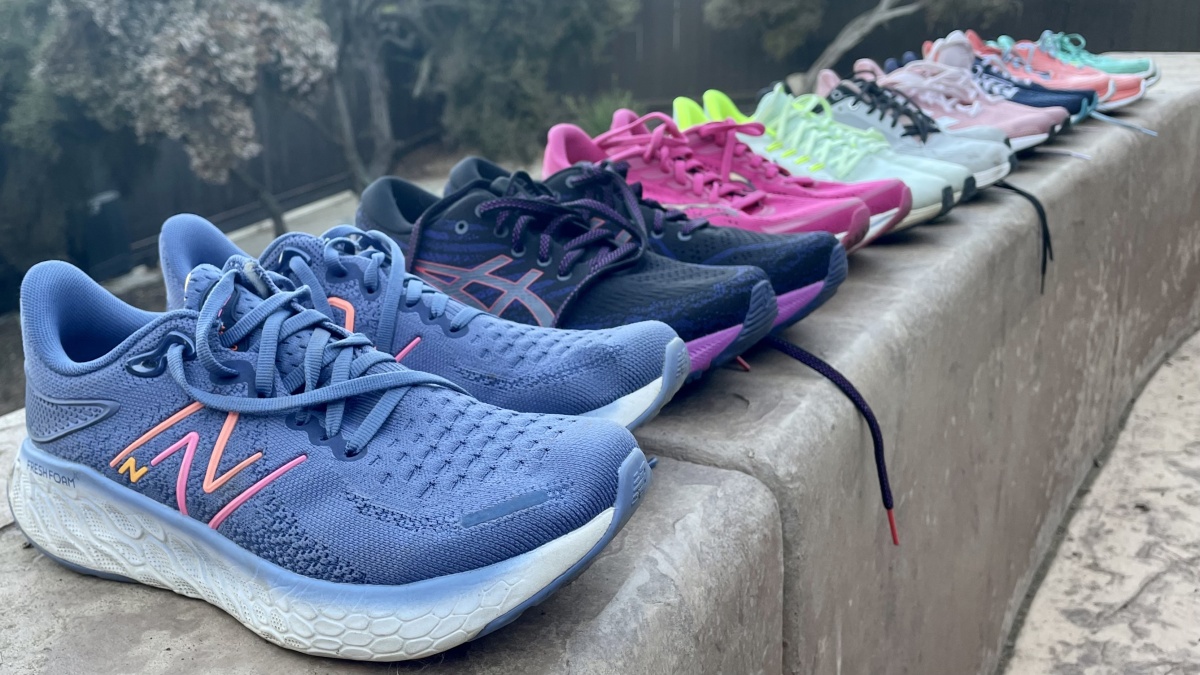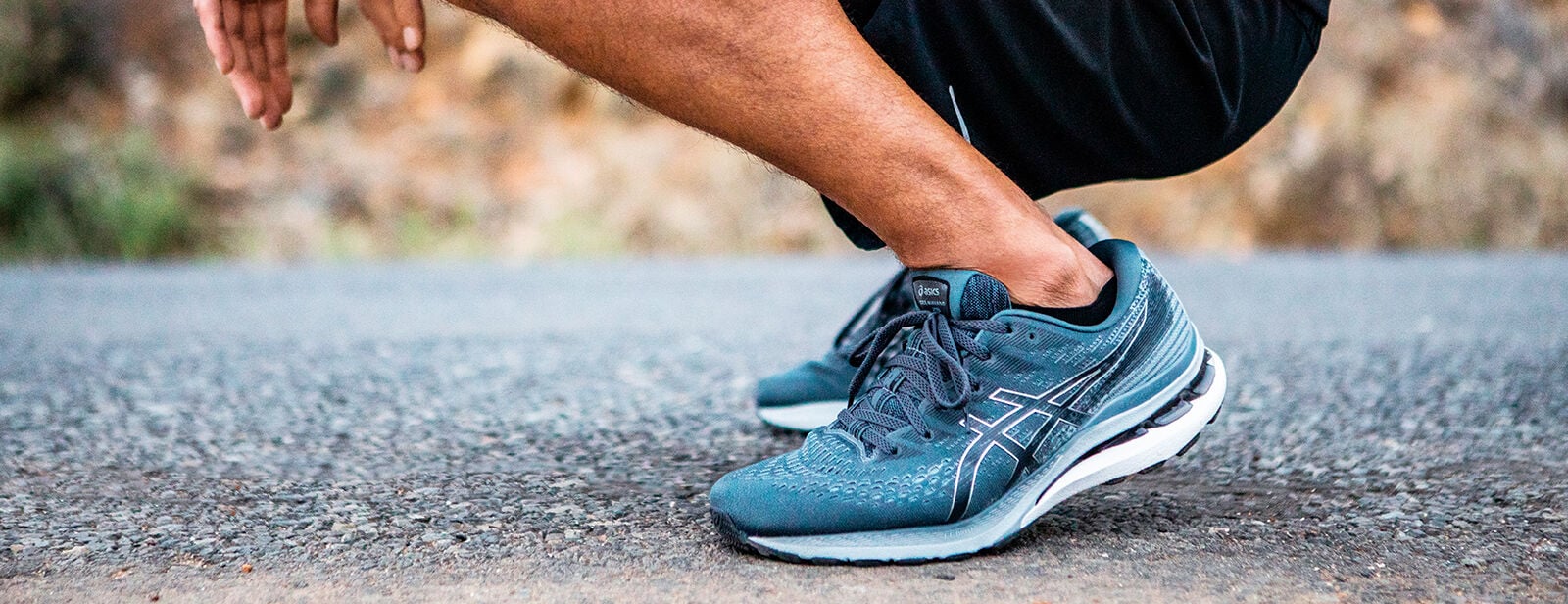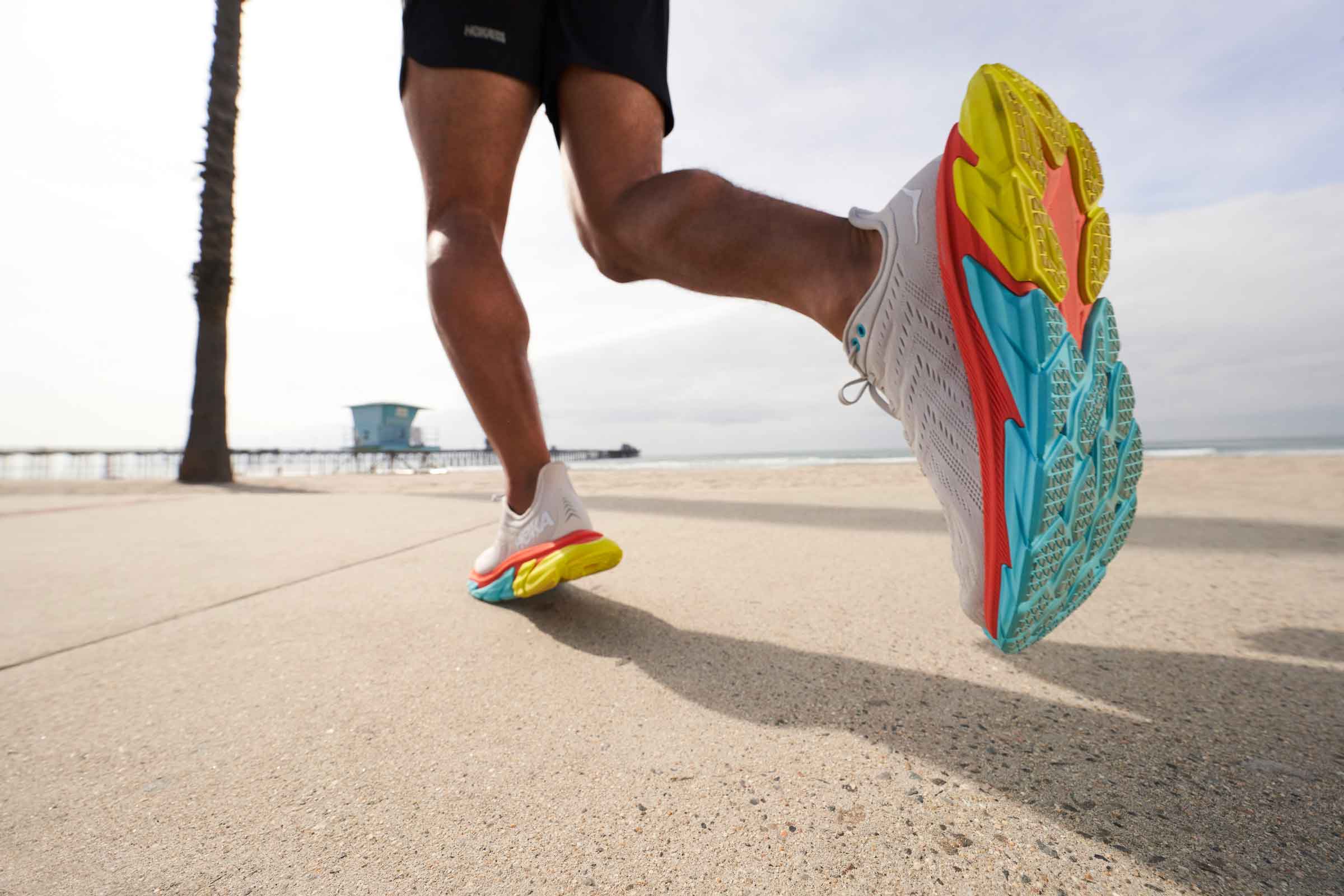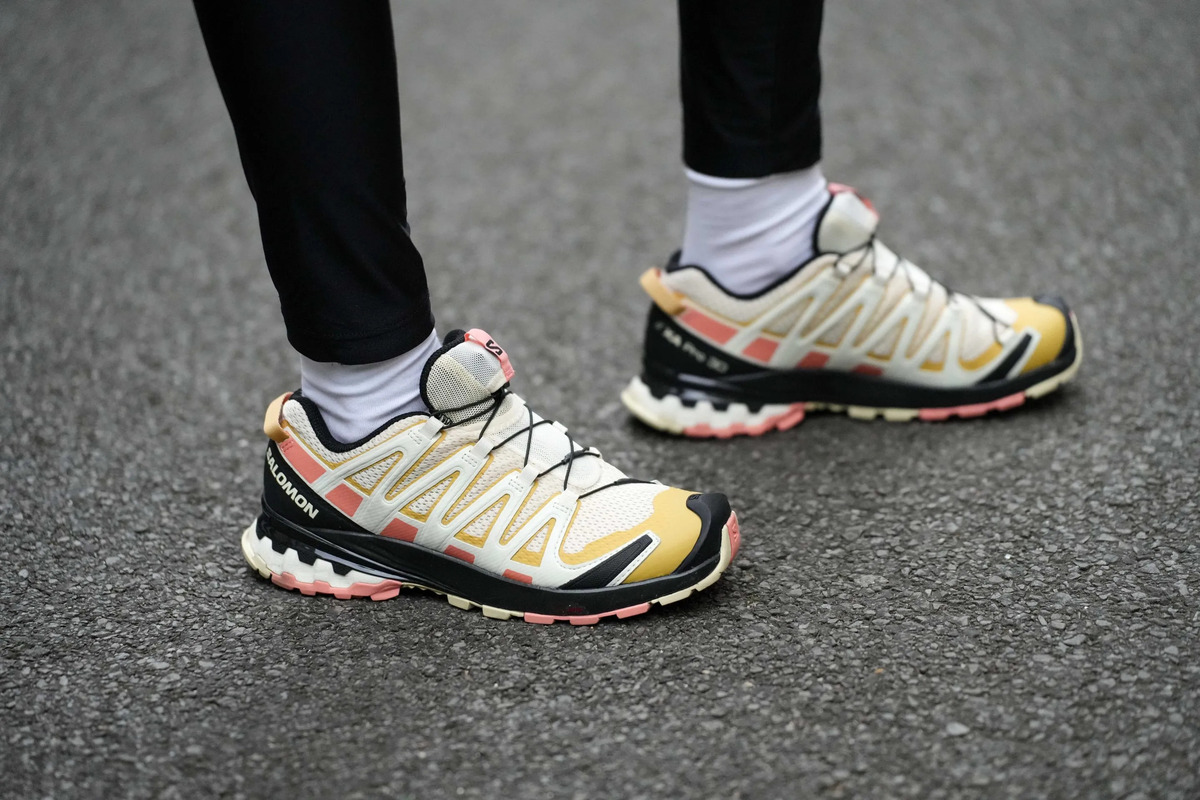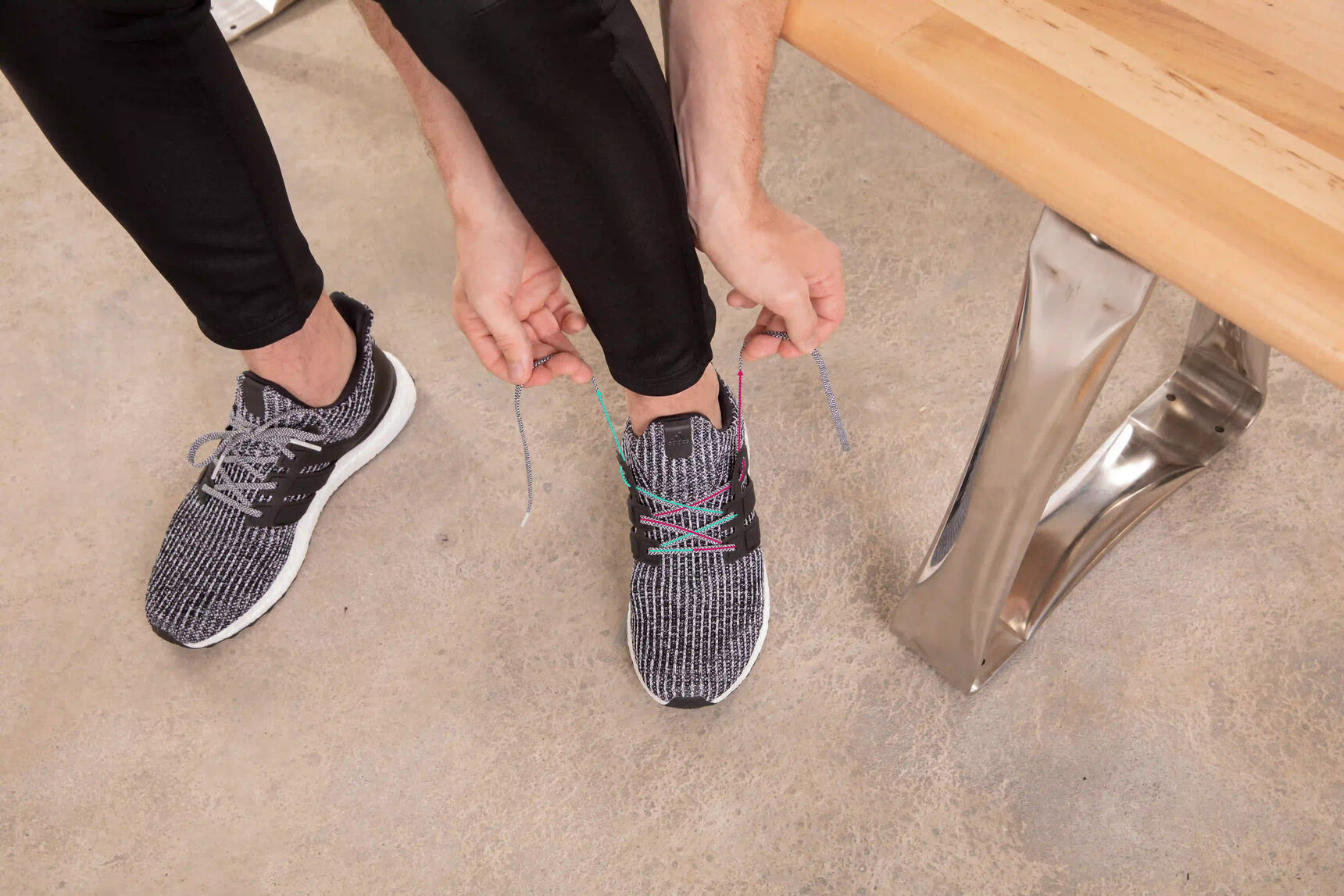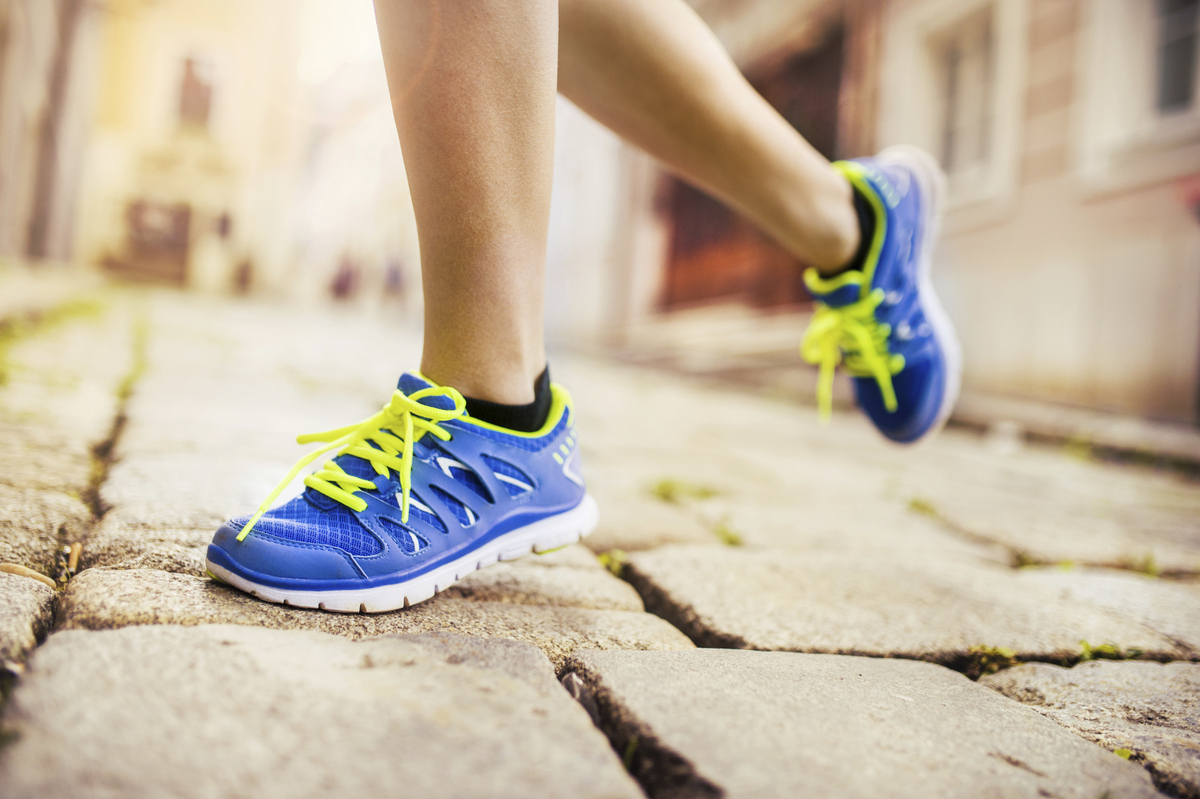

Featured
Why Are Running Shoes Important
Modified: January 22, 2024
Discover why running shoes are important in maximizing performance and preventing injuries. Stay ahead with our featured selection of high-quality running shoes.
Introduction
When it comes to running, you might think that any pair of sneakers will do. However, investing in a good pair of running shoes can make all the difference in your performance, comfort, and most importantly, injury prevention. Running shoes are specially designed footwear that provide the necessary support, cushioning, and protection for your feet and joints while engaging in this high-impact activity.
Whether you are a seasoned runner or just starting out, wearing proper running shoes is essential for optimal performance and to minimize the risk of injuries. In this article, we will explore the importance of running shoes and why you should consider investing in a pair that suits your needs.
Protection and Cushioning:
One of the key benefits of running shoes is their ability to provide protection and cushioning for your feet and joints. The midsoles of running shoes are equipped with shock-absorbing materials such as EVA foam or gel, which help to reduce the impact on your feet and knees while running. This cushioning helps to prevent injuries such as stress fractures and shin splints by absorbing the shock generated with each stride.
Stability and Support:
Another crucial aspect of running shoes is the stability and support they offer. The soles of running shoes are designed with features such as arch support and reinforced heels to provide stability and prevent overpronation or supination. Overpronation is when the foot rolls inward excessively, while supination is when the foot rolls outward excessively. Both can lead to various injuries and discomfort if not properly addressed. Running shoes help correct these pronation issues and provide the necessary support to maintain proper alignment during your runs.
Injury Prevention:
Wearing running shoes that fit well and provide proper support can significantly reduce the risk of common running injuries. By absorbing impact, promoting proper foot alignment, and reducing excessive motion, running shoes help prevent problems such as Achilles tendonitis, plantar fasciitis, and knee pain. It is important to note that running shoes are not a guarantee against injuries, but they greatly reduce the chances and severity of them.
Performance Enhancement:
When you have the right pair of running shoes, you will notice an improvement in your overall performance. The cushioning and responsiveness of the shoes allow for a more efficient stride and energy transfer, helping you to run faster and endure longer distances. Additionally, the added support and stability can enhance your running form, reducing the risk of fatigue and improving your running efficiency.
Now that you understand the importance of running shoes, the next step is finding the right pair that fits you perfectly and meets your specific running needs. In the next sections, we will explore the factors to consider when choosing running shoes, including proper fit, type of shoes, and other important considerations.
Benefits of Running Shoes
Running shoes offer a wide range of benefits that go beyond simply providing comfort for your feet. Whether you are a seasoned runner or just starting out, here are some key advantages of wearing proper running shoes:
Protection and Cushioning:
One of the primary benefits of running shoes is the protection and cushioning they provide. The midsoles of running shoes are designed with materials that absorb shock and reduce the impact on your feet and joints. This cushioning helps to minimize the risk of injuries such as stress fractures and shin splints by effectively absorbing the repetitive impact of running.
Stability and Support:
Running shoes offer stability and support to help maintain proper foot alignment and prevent overpronation or supination. Overpronation occurs when the foot rolls inward excessively, while supination happens when the foot rolls outward excessively. These movements can lead to various injuries and discomfort, but running shoes with proper arch support and reinforced heels can correct these pronation issues and provide the necessary support to prevent them.
Injury Prevention:
Wearing running shoes that fit well and provide adequate support can significantly reduce the risk of common running injuries. The cushioning and support in running shoes help to absorb shock and minimize stress on your feet, ankles, knees, and hips. By reducing excessive motion and promoting proper alignment, running shoes can prevent problems such as plantar fasciitis, Achilles tendonitis, and knee pain.
Performance Enhancement:
The right pair of running shoes can enhance your overall performance by improving your efficiency and endurance. Good running shoes provide the necessary cushioning and responsiveness to optimize your stride, allowing for a more efficient transfer of energy and propelling you forward. Additionally, the support and stability provided by running shoes can improve your running form, reducing fatigue and increasing your running efficiency.
Comfort:
Running shoes are designed with comfort in mind. They are typically lightweight, breathable, and have flexible uppers that conform to the shape of your feet. This ensures a comfortable fit and minimizes discomfort or irritation during long runs. The cushioning and shock absorption properties of running shoes also contribute to a more comfortable running experience by reducing the strain on your feet and joints.
Overall, investing in a good pair of running shoes is essential for both injury prevention and performance enhancement. Not only do they provide protection, stability, and support, but they also maximize your comfort and help you achieve your running goals. In the next sections, we will delve into more details about finding the right running shoes, including the importance of proper fit and factors to consider when selecting the type of shoes.
Protection and Cushioning
One of the primary benefits of running shoes is the protection and cushioning they provide. When you run, your feet and joints are subjected to significant impact with each stride. Running shoes are designed with features that help mitigate this impact, reducing the risk of injuries and providing a more comfortable running experience.
The midsoles of running shoes are specifically engineered to offer cushioning and shock absorption. They are often made with materials such as EVA foam or gel, which have excellent shock-absorbing properties. This cushioning helps to absorb the repetitive impact forces generated while running and distributes them more evenly across the foot. By doing so, running shoes help to minimize stress on the feet and lower limbs, reducing the risk of injuries such as stress fractures and shin splints.
In addition to cushioning, running shoes also provide protection from external hazards. The outsoles are designed to be durable and provide traction, allowing for better grip on various surfaces. This reduces the likelihood of slipping or falling while running on uneven terrain or slippery surfaces.
Another aspect of protection provided by running shoes is the inclusion of toe caps or reinforced toe boxes. These features provide extra protection to the toes, guarding against stubbing or impact injuries. The uppers of running shoes are often made from breathable materials that protect the feet from external elements, such as dirt, debris, or even water, helping to keep your feet dry and comfortable during your run.
Proper protection and cushioning are essential for runners of all levels. They not only enhance the overall running experience but also play a crucial role in injury prevention. When choosing running shoes, it is important to consider the level of cushioning you need based on factors such as your weight, running surface, and personal preference. Some runners may prefer maximum cushioning for long-distance runs, while others may opt for a more minimalist approach. It is all about finding the right balance that suits your needs and running style.
Remember, running shoes are not just about comfort; they are an investment in your running performance and long-term foot health. The protection and cushioning they offer help to minimize the impact on your feet and joints, reducing the risk of injury and allowing you to run with confidence and comfort.
In the next sections, we will explore other important aspects of running shoes, such as stability and support, and how they contribute to a safer and more efficient running experience.
Stability and Support
Having proper stability and support is crucial for runners, as it helps maintain proper foot alignment and reduces the risk of injuries. Running shoes are specifically designed to provide the stability and support needed to ensure a safe and comfortable running experience.
One of the key features of running shoes that contribute to stability is the inclusion of arch support. The arch of the foot acts as a natural shock absorber, and having proper arch support helps maintain the foot’s natural alignment during running. This is particularly important for runners with high arches or flat feet, as these foot types are more prone to issues such as overpronation or supination.
Overpronation is the inward rolling of the foot while running, where the arch collapses excessively. This can lead to misalignment and increase the risk of injuries such as plantar fasciitis, shin splints, and knee pain. Running shoes with sufficient arch support and stability features, such as medial posts or dual-density midsoles, help to control overpronation by providing the necessary support to the arch, thus promoting proper alignment.
On the other hand, supination, also known as underpronation, occurs when the foot rolls outward excessively during the running gait. This can result in poor shock absorption and an increased risk of stress fractures and ankle sprains. Running shoes designed to address supination have different features, such as cushioning in the lateral side and a flexible, curved shape that helps to redirect the foot’s motion inward.
In addition to arch support, running shoes also provide stability through the design of the heel counter. The heel counter is the rigid part of the shoe that surrounds the heel and helps stabilize the foot. It prevents excessive movement of the heel, reducing the risk of ankle sprains and providing stability when landing and taking off during running.
Moreover, running shoes offer additional support through features like structured uppers and lacing systems. The uppers are designed to hold the foot securely in place, preventing excessive movement inside the shoe. The lacing systems allow for a customized fit, ensuring that the shoe wraps snugly around the foot and provides optimal support.
When selecting running shoes, it is essential to consider your specific foot type, running gait, and any particular support needs you may have. A gait analysis or consultation with a knowledgeable professional can help determine the level of stability and support that would benefit you the most.
By providing the necessary stability and support, running shoes help to maintain proper alignment, reduce the risk of injuries, and enhance your running performance. In the next sections, we will explore other benefits of running shoes, such as injury prevention and performance enhancement, to further reinforce their importance in running activities.
Injury Prevention
One of the most crucial benefits of wearing proper running shoes is the significant reduction in the risk of running-related injuries. Running is a high-impact activity that puts stress on your feet, ankles, knees, and hips with every stride. Wearing the right running shoes can help minimize the impact and decrease the likelihood of injuries.
One common running injury is plantar fasciitis, which is inflammation of the plantar fascia, a band of tissue that connects the heel bone to the toes. This condition can result from excessive stress and repetitive strain on the ligament. Running shoes with proper cushioning and arch support help absorb shock and reduce the strain on the plantar fascia, minimizing the chance of developing plantar fasciitis.
Achilles tendonitis, the inflammation of the Achilles tendon, is another common running injury. This occurs when the tendon that connects the calf muscles to the heel bone becomes irritated due to repetitive stress. Running shoes with appropriate cushioning and support can help reduce the load on the Achilles tendon and provide better shock absorption, minimizing the risk of developing tendonitis.
Furthermore, running shoes can help prevent shin splints, which are characterized by pain along the shinbone (tibia). Shin splints often occur due to overuse, inadequate footwear, or improper running technique. Running shoes with proper cushioning and shock absorption help to reduce the impact on the shinbone and lessen the strain on the muscles and connective tissues in the lower leg, decreasing the risk of developing shin splints.
Running shoes also play a crucial role in preventing knee pain. During running, the knees endure significant forces, especially when the foot strikes the ground. Ill-fitting or improper shoes can worsen the impact, leading to knee discomfort or even injuries such as patellofemoral pain syndrome or runner’s knee. Choosing running shoes with proper cushioning, stability, and support can help lessen the impact on the knees and decrease the risk of developing knee pain or injuries.
Additionally, running shoes can contribute to the prevention of other common running-related injuries, such as stress fractures, ankle sprains, and blisters. The cushioning and shock absorption properties of running shoes help to minimize the stress on the bones, joints, and soft tissues, reducing the risk of stress fractures and sprains. In addition, well-fitted running shoes with breathable materials can help reduce friction and pressure on the feet, decreasing the likelihood of blisters.
By providing the necessary cushioning, stability, and support, running shoes help to absorb shock, distribute impact forces, and reduce excessive motion. All of these factors work together to minimize the risk of running-related injuries and allow for a safer and more enjoyable running experience.
In the next section, we will explore how running shoes can enhance your overall running performance by improving your running efficiency and endurance.
Performance Enhancement
Investing in a good pair of running shoes can have a significant impact on your overall running performance. The right shoes not only provide comfort and support but also enhance your running efficiency and endurance. Here are some ways in which running shoes contribute to performance enhancement:
Cushioning and Responsiveness:
Running shoes are designed with cushioning materials in the midsole to absorb shock and provide a comfortable running experience. This cushioning not only protects your feet and joints but also improves the responsiveness of your stride. The energy-absorbing properties of the midsole materials help in efficient energy transfer, resulting in a more springy and responsive feel with each step. This enhanced responsiveness allows you to run more efficiently and with less effort, ultimately improving your overall performance.
Support and Stability:
Running shoes with proper support and stability features can help improve your running form and efficiency. They provide support to key areas of the foot, such as the arch and heel, helping to maintain proper foot alignment. This helps distribute the forces evenly across your foot, reducing the risk of overpronation or supination. By promoting a more stable and aligned foot strike, running shoes help minimize energy loss and improve running efficiency.
Improved Running Form:
Wearing the right pair of running shoes can also contribute to an improved running form. The cushioning, support, and stability provided by running shoes help reduce the chances of fatigue and prevent your feet from rolling inward or outward excessively. This allows for a more natural and efficient stride, leading to better running technique and overall performance. Improved running form helps to conserve energy and decreases the risk of injuries that may arise from improper mechanics.
Endurance and Comfort:
Running shoes that provide optimal cushioning and support enhance your overall comfort during long-distance runs. The shock absorption properties of the shoes reduce the strain on your muscles and joints, allowing you to endure longer without discomfort. The comfort provided by running shoes helps to minimize fatigue and allows you to maintain a steady pace for extended periods, ultimately boosting your endurance and performance.
Customized Fit:
Running shoes come in a variety of sizes, widths, and designs to accommodate different foot shapes and sizes. A proper fit is crucial in maximizing performance. Ill-fitting shoes can cause discomfort, blisters, or even foot pain, hindering your running performance. When you find the right pair that fits your feet perfectly, you can run with more confidence, focus, and efficiency, allowing you to achieve your running goals.
Overall, investing in high-quality running shoes that are designed to enhance performance can make a substantial difference in your running journey. The right shoes provide cushioning, support, and a comfortable fit, all of which contribute to improved running efficiency, endurance, and overall performance.
In the next section, we will delve into important factors to consider when choosing the right running shoes, such as proper fit and the different types of running shoes available in the market.
Finding the Right Running Shoes
Choosing the right running shoes is essential for a comfortable and injury-free running experience. With the vast array of options available in the market, it can be overwhelming to find the perfect pair. However, by considering a few key factors, you can find the running shoes that best suit your needs and preferences.
Proper Fit:
Ensuring a proper fit is paramount when selecting running shoes. Ill-fitting shoes can lead to discomfort, blisters, and even injuries. It is recommended to have your feet measured by a professional, as shoe sizes can vary between brands. Look for shoes that have enough space in the toe box to allow your toes to move comfortably, without feeling cramped. A snug, yet not overly tight, fit in the heel and midfoot is also important to prevent slippage. Take the time to try on different sizes and styles to find the perfect fit for your feet.
Foot Type and Pronation:
Understanding your foot type and pronation is essential in choosing the right running shoes. Pronation refers to the natural inward rolling motion of the foot during running. There are three types of pronation: neutral pronation, overpronation, and supination. Knowing your pronation type can help you select shoes with the appropriate level of support and stability. A gait analysis conducted by a professional can determine your pronation type and guide you towards the right shoe options.
Type of Running Shoes:
There are different types of running shoes available, each designed for specific running surfaces and distances. Road running shoes are suitable for pavement and other hard surfaces, while trail running shoes have additional features like aggressive tread patterns and reinforced uppers for off-road terrains. Additionally, there are lightweight racing shoes for maximum speed and minimalist shoes for those who prefer a more natural running experience. Consider your running goals and the surfaces you plan to run on when determining the type of shoes best suited for you.
Support and Cushioning:
Consider the level of support and cushioning you require based on your body weight, running style, and personal preference. If you have a higher body weight or require extra support due to overpronation, look for shoes with additional stability features such as medial posts or arch support. Similarly, if you prefer more cushioning, opt for shoes with thicker midsoles and superior shock absorption properties. Strike a balance between cushioning and responsiveness to find the level of support and comfort that suits your needs.
Try Before You Buy:
Always try on running shoes before making a purchase. This allows you to assess their comfort, fit, and feel. Walk or jog around the store to get a sense of how they perform. Pay attention to any discomfort or pressure points. Remember that a good pair of running shoes should feel comfortable from the moment you put them on.
Seek Expert Advice:
If you are unsure about which running shoes would be best for you, seek advice from professionals at running specialty stores. They can offer valuable insights and recommendations based on your specific needs and running goals. They may also provide gait analysis and help you find the perfect fit and type of shoes for your feet.
Investing the time and effort into finding the right running shoes is crucial for your running performance, comfort, and injury prevention. Considere factors such as proper fit, foot type and pronation, the type of running shoes, and the level of support and cushioning. By finding the perfect pair, you are setting yourself up for a more enjoyable and successful running experience.
In the next section, we will wrap up this article by summarizing the main points discussed and emphasizing the importance of choosing running shoes wisely.
Proper Fit
One of the most important aspects to consider when choosing running shoes is ensuring a proper fit. A proper fit is crucial for both comfort and performance during your runs. Ill-fitting shoes can lead to discomfort, blisters, and even injuries, so it’s essential to take the time to find the perfect fit for your feet.
Getting Measured:
To start, consider having your feet measured by a professional. Your shoe size can change over time, and different brands may have slight variations in sizing. A proper measurement can provide an accurate reference point to help you find the right size.
Toe Box Space:
When trying on running shoes, pay attention to the space in the toe box area. Your toes should have enough room to wiggle comfortably without feeling constrained. Having adequate space in the toe box can help prevent issues such as black toenails or blisters caused by the toes rubbing against the shoe during runs.
Heel and Midfoot Fit:
Another important aspect of fit is how the shoe fits around your heel and midfoot. Your heel should feel comfortably snug without any slippage, while the midfoot area should provide a secure and supportive fit. A well-fitted heel and midfoot help to prevent the foot from sliding within the shoe, reducing the risk of blisters or discomfort during runs.
Trying Them On:
When trying on running shoes, it’s important to wear the same type of socks that you typically wear when running. This will help ensure an accurate fit. Walk or jog around the store to get a sense of how the shoes feel and perform. Pay attention to any areas of discomfort, pressure points, or unusual sensations. A good pair of running shoes should feel comfortable from the moment you put them on and should not require a “break-in” period.
Considerations for Foot Type:
Different individuals have different foot types, so it’s important to consider this when choosing running shoes. Flat-footed individuals may require more arch support, while those with high arches may benefit from cushioning and stability features. Understanding your foot type can help you choose shoes that provide the right level of support and comfort.
Expert Advice:
If you’re unsure about finding the right fit or have specific concerns about your feet, seeking advice from professionals at running specialty stores can be beneficial. They are knowledgeable about various shoe brands and models, and they can provide valuable insights and recommendations based on your needs and preferences. Additionally, they may offer fittings and gait analysis to help you find the perfect fit for your feet.
Remember, finding the proper fit is crucial for your running journey. Ill-fitting shoes can lead to discomfort, pain, and even injuries that can hinder your progress. Take the time to find the right size, consider your foot type, and seek professional advice when needed. By prioritizing a proper fit, you’ll be setting yourself up for a more enjoyable and successful running experience.
In the next section, we will wrap up this article by summarizing the main points discussed and emphasizing the importance of choosing running shoes wisely.
Choosing the Right Type of Running Shoes
When it comes to choosing running shoes, it’s important to consider the type of shoes that are best suited for your running needs and preferences. There are various types of running shoes available, each designed to cater to different running surfaces, distances, and personal preferences. Selecting the right type of running shoes can greatly enhance your running experience and performance.
Road Running Shoes:
Road running shoes are designed for running on pavement and other hard surfaces. They typically provide cushioning and shock absorption to minimize the impact on your feet and joints. Road running shoes have durable outsoles with a versatile tread pattern that offers traction on roads and sidewalks. These shoes are a popular choice for runners who primarily run on concrete or asphalt surfaces.
Trail Running Shoes:
If you enjoy running on off-road terrains like trails, mountains, or muddy paths, trail running shoes are the ideal choice. They have aggressive outsoles with deep lugs that provide excellent grip and traction on uneven and slippery surfaces. Trail running shoes often feature reinforced uppers to protect your feet from debris, rocks, and other hazards that you may encounter on the trail.
Racing Shoes:
Racing shoes are designed for maximum speed and are typically lighter and more minimalistic than other running shoes. They aim to enhance your running efficiency and help you achieve your fastest times during races. These shoes may have reduced cushioning to minimize weight and promote a more natural feel. Racing shoes are typically used for shorter distances, such as 5K or 10K races.
Minimalist Shoes:
Minimalist shoes are designed to mimic the experience of running barefoot or with minimal shoe support. They have a lightweight and flexible design with minimal cushioning and support. Minimalist shoes aim to promote a more natural running form and strengthen the foot and leg muscles. However, they are not suitable for everyone and require a gradual transition due to the increased demand on the feet and lower legs.
Stability Shoes:
Stability shoes are designed for runners who overpronate or have a more flat-footed running gait. These shoes offer additional support and stability features to help correct overpronation and promote proper foot alignment. Stability shoes often have a medial post or a firmer midsole to provide the necessary support to the arch of the foot. These shoes are recommended for runners who need mild to moderate stability control.
Neutral Cushioned Shoes:
Neutral cushioned shoes are suitable for runners with a neutral foot strike who do not require extra stability features. These shoes offer a good balance of cushioning and flexibility, providing shock absorption and comfort. They are designed to accommodate a wide range of runners and running styles, making them a popular choice for many runners.
When choosing the right type of running shoes, consider factors such as the surfaces you will be running on, the distances you typically run, and your own personal preferences. It can also be helpful to consult professionals at running stores, who can provide expert advice and insights based on your specific needs.
Remember, the right type of running shoes can greatly contribute to your running performance, comfort, and overall enjoyment. By selecting the shoes that align with your running goals and preferences, you will be setting yourself up for a successful and fulfilling running experience.
In the next section, we will conclude this article by summarizing the key points discussed and emphasizing the importance of choosing running shoes wisely.
Factors to Consider When Choosing Running Shoes
When it comes to choosing the right running shoes, there are several important factors to consider. By taking these factors into account, you can ensure that you find the perfect pair that fits your specific running needs and preferences. Here are some key factors to consider:
Foot Type and Pronation:
Understanding your foot type and pronation is crucial in selecting the right running shoes. Pronation refers to the natural inward rolling motion of the foot during running. There are three main types of pronation: neutral, overpronation, and supination. Knowing your pronation type can help you choose shoes that provide the appropriate level of support and stability. A gait analysis conducted by a professional can determine your pronation type and guide you towards suitable shoe options.
Running Surface:
Consider the running surfaces you will be primarily running on. Road running shoes are designed for pavement and other hard surfaces, while trail running shoes are built to tackle off-road terrains. Each type of shoe has specific features tailored to their respective surfaces. If you plan on running on a mix of road and trail, there are hybrid options available that provide a balance of both features.
Distance and Running Intensity:
Think about the distances you typically run and your running intensity. Running shoes come in various styles suited for different distances and running intensities. For shorter, faster-paced runs, lightweight racing shoes may be more appropriate. If you’re training for longer distances or participating in marathons, shoes with additional cushioning and support will provide the necessary comfort and shock absorption for longer durations of running.
Fit and Comfort:
Ensure that the shoes fit properly and offer a comfortable feel. The shoes should have enough space in the toe box to allow for natural toe movement without feeling cramped. They should also provide a secure fit in the heel and midfoot, preventing slippage within the shoe. Comfort is key during long runs, so it’s important to find a pair that feels comfortable from the moment you put them on and does not require a lengthy break-in period.
Durability and Longevity:
Consider the durability of the shoes and how long you expect them to last. The materials used, construction quality, and the brand’s reputation for durability can all factor into the longevity of the shoes. While it’s crucial to find shoes that offer the features you need, it’s also important to invest in a pair that will last and provide value over time.
Price:
Set a budget for your running shoes and consider the price range that suits your needs. Running shoes can vary widely in price, depending on the brand, features, and materials. While it’s essential to find a pair that fits your budget, it’s also important to prioritize quality, fit, and features over price, as investing in a good pair of running shoes is an investment in your comfort and long-term foot health.
Expert Advice:
If you’re uncertain about which running shoes would be best for you, seeking advice from professionals at running specialty stores can be immensely helpful. They have experience and expertise in fitting runners with the appropriate shoes based on their specific needs. Additionally, they may offer gait analysis services and be knowledgeable about different shoe models and brands, allowing them to provide tailored recommendations.
By considering these factors when choosing running shoes, you can ensure that you find the perfect pair that meets your individual needs. Finding the right shoes will enhance your running experience, improve performance, and decrease the risk of discomfort and injury.
In the next section, we will conclude this article by summarizing the key points discussed and emphasizing the importance of choosing running shoes wisely.
Conclusion
Choosing the right running shoes is essential for a comfortable, enjoyable, and injury-free running experience. Running shoes provide protection, cushioning, stability, and support that enhance your performance and overall running journey. By considering factors such as proper fit, foot type and pronation, running surface, distance, and personal preferences, you can find the perfect pair of running shoes that meet your specific needs and goals.
Proper fit is crucial. Make sure the shoes have enough space in the toe box, a secure fit in the heel and midfoot, and feel comfortable from the moment you put them on. Your foot type and pronation should guide your choice of shoes, ensuring the right level of support and stability. Consider the surfaces you will be running on and choose shoes designed for road or trail running accordingly.
Additionally, think about the distances and running intensities you typically engage in to find shoes that offer the necessary cushioning and support. Durability, price, and seeking expert advice from professionals at running specialty stores are also important considerations when selecting your running shoes.
Investing in high-quality running shoes that suit your needs plays a vital role in preventing injuries, improving running efficiency, and enhancing overall performance. The right shoes can minimize impact, reduce the risk of common running injuries, and provide the support and comfort you need for long-distance runs.
Remember that running shoes are not a one-size-fits-all solution. Each person’s feet and running style are unique, so take the time to find the best shoes for you. Trying on different models, seeking professional advice, and considering your individual requirements will help you make an informed decision.
Whether you’re a seasoned runner or just starting out, the importance of choosing running shoes wisely cannot be overstated. They are an investment in your running journey and well-being. Take the time to find the perfect pair, and you will reap the benefits of improved performance, comfort, and injury prevention.
So lace up your running shoes, hit the road or the trails, and enjoy the exhilarating feeling of running with the right shoes on your feet!

